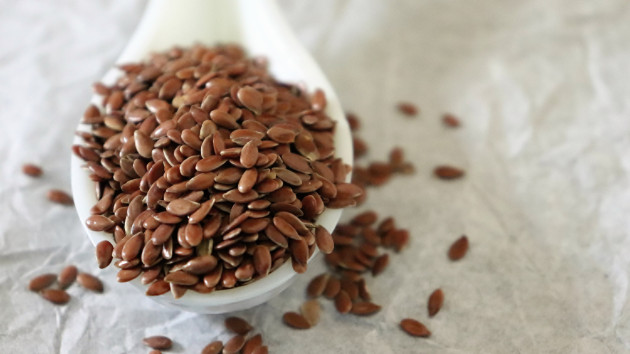(NEW YORK) — The latest trend to take hold on TikTok boasts flaxseed gel as a slimy addition to beauty routines, but medical experts are advising against it, saying it lacks scientific basis.
Hundreds of TikTok users have claimed on the video sharing platform that homemade flaxseed gel is “basically nature’s Botox.”
Courtney Snell was among those who posted a video using the homemade flaxseed gel, applying it as a mask to her face.
“I made some flaxseed gel and we’re gonna try it out,” Snell says in the video, which she tagged #NaturesBotox, adding that she used to get Botox injections and recently hopped on this trend after watching others try the at-home concoction.
She adds, “I saw this one girl [who tried this], and it literally looked like [she had] Botox.”
Snell documented the results of her flaxseed gel mask in a follow-up video, saying her forehead lines seemed to have been reduced.
“This is such a difference,” she says in the video, adding that she is “struggling” to move her forehead expressively.
Doctor debunks social media flaxseed gel trend
Experts are less enthusiastic about the trend.
“I will tell you definitively that flaxseeds applied topically to one’s skin is not, I repeat, not Botox,” said Dr. Jennifer Ashton, ABC News chief medical correspondent, who also has a master’s in nutrition. “It doesn’t work the same way as Botox, it doesn’t have the same properties as Botox.”
Cosmetic Botox is a neuromodulator that causes temporary muscular paralysis in order to smooth out wrinkles or reduce the appearance of fine lines and wrinkles, according to the American Society for Dermatologic Surgery.
Botox is made from botulinum toxin, and can also be used to treat a number of health conditions, including chronic migraine, spastic disorders, cervical dystonia and detrusor hyperactivity, according to StatPearls, an online library published in the National Library of Medicine.
Upon watching people slathering the thick clear goo on their faces in various TikTok videos, Ashton said she observed in one video a “very beautiful, very young woman who, as far as I know, does not have any credentials in nutrition or medicine or dermatology, talking a lot of science.”
“Very little of what she said about the utility of flaxseeds applied topically to one’s face is scientifically accurate,” Ashton said. “Sorry to burst that bubble.”
She continued, “Trust me when I tell you that if flaxseeds applied to one’s face could act like Botox, I would be jumping in on that along with everyone else.”
The gel commonly seen on TikTok appears to be made from dry flaxseeds soaked in boiling hot water, and stored in the fridge for up to 24 hours to allow it to congeal.
“If you’re applying [this gel] to your face, there is the possibility that you can have some contact irritation, dermatitis, even potentially an allergic reaction,” Ashton said. “The biggest risk here — and this is true with almost every TikTok medical trend — is someone following this as credentialed, credible medical advice and information. It is not.”
“Your skin is the largest organ in the body,” she continued. “That means that anything you put on your skin can and will be absorbed into your bloodstream. So choose wisely.”
Ashton instead recommends using natural oils like olive oil, coconut oil or avocado oil “as a head to toe moisturizer,” which she said would be preferable to products with chemicals on the label.
“The risk of doing this home kitchen mask, if you will, is you’re not going to get that result,” she added, referring to those who claim the gel has given them the same effect as cosmetic Botox.
Better uses for flaxseeds
As for the science behind flaxseed oil and flaxseeds, Ashton said that “when ingested orally, they’re great.”
“Colloquially, I think that flaxseeds qualify as a superfood,” she said. “They are loaded with omegas, they are loaded with fiber, they are loaded with minerals.”
While adding a scoop to a breakfast routine like smoothies or oatmeal may seem like the perfect nutritious boost, Ashton said that “one tablespoon is not all the fiber that the average young woman needs in a day.”
“[Women under the age of 50] need about 25 grams of fiber a day,” she said.
Finally, Ashton noted, “As always, my medical advice is to get your medical information from credible, credentialed sources — generally not TikTok, and not social media, and proceed with caution if you do.”
Copyright © 2023, ABC Audio. All rights reserved.












